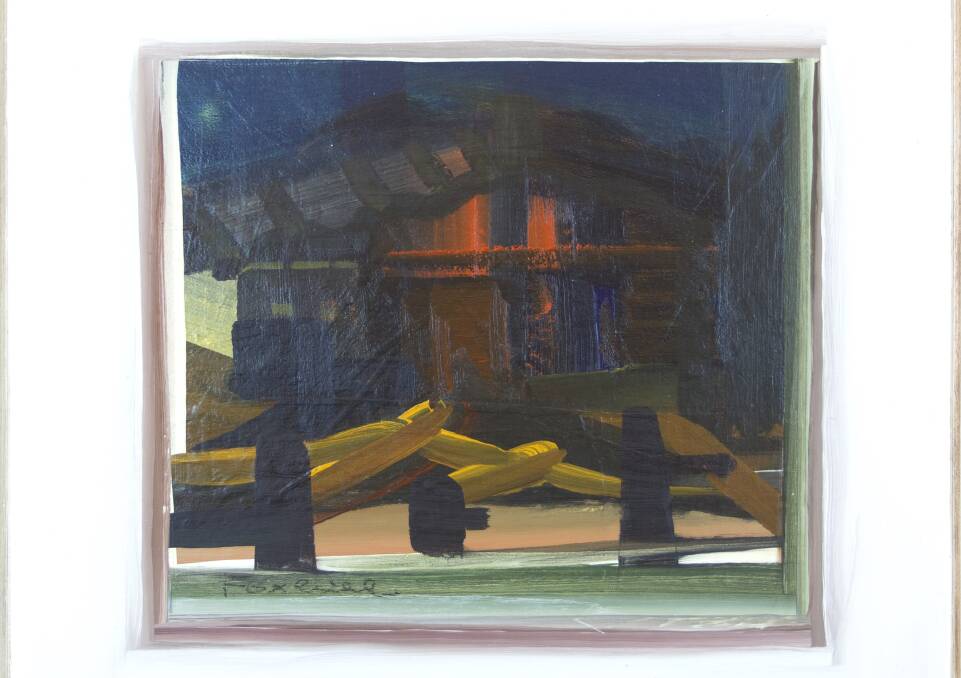Seeing Canberra. Various artists. Canberra Museum + Gallery, until September 12.
Subscribe now for unlimited access.
or signup to continue reading

Ever since the Canberra Museum + Gallery (lovingly known as CMAG) opened its doors 22 years ago, its mission has been to tell the story of Canberra in artefacts and artworks.
This is the purpose and primary function of the generous gallery space to the right as you enter the museum from London Circuit. I recall, that when the museum first opened, I was disappointed that the word "art" did not appear in its title. It seemed intended more as a social science museum than an art gallery, but several prominent curators with an art background have managed to develop a strong program of art exhibitions.
Seeing Canberra is the new vision of Australia's capital as conceived by Virginia Rigney - the museum's senior curator of visual art - who has reshaped the visual overview that, if I recall correctly, in the past was called Reflecting Canberra. It is a rather "proactive" vision of Canberra, where art is at the forefront and speaks of an active cultural hub that is not completely preoccupied with the antics going on in the circus in the big house on the hill.
As one would anticipate, surveyors and interstate bickering over location and eventually the building of the "old" Parliament House that was graced by the visit of the young monarch in 1954 dominate the early history of Canberra. It was commonly said that, "Canberra was the waste of a good sheep paddock" and there is little in the visual evidence to contradict this.
By the late 1950s, deep into the long reign of prime minister Robert Menzies, a reign that was generally disastrous for the arts in Australia but a boon for Canberra, the core of Civic started to take shape and Canberra was developing an identity.
The exhibition reflects an image of a city that was stately, patriotic and apparently a spot boring. Landscapes by Douglas Dundas, Dorothy Thornhill and Elioth Gruner are all testimony to a paddock under attack, but also the planting of new vegetation to counter the earlier land clearing.
An interesting inclusion is a cast for the head of Ethos - representing the spirit of the community in Civic Square - by the sculptor Tom Bass, in what probably would have been the largest monumental sculpture in Canberra in 1961.
Ethos, Greek for "the place of living", appears as a winged personification of the civic pride of Canberra with a robe embossed with figures and emblems of the community, while standing on a map of the city and holding above the sun of hope.
Odd and interesting pieces in this exhibition are a small painting of a mountain hut by the Austrian artist George Foxhill, who settled in Canberra, and Frank Hinder's Office workers in Canberra, made while he was resident here during the war.
It was in the late 1970s and into the 1980s, that Canberra turned interesting with a host of artists who started to call the city home. They included Rosalie Gascoigne, Michael Taylor, Kevin Gilbert and Toni Robertson.
In 1982, the National Gallery opened its doors and a flourishing art scene developed with a plethora of printmaking workshops, commercial art galleries, facilities for ceramics and the rapid expansion of national collecting institutions.
It is in this later phase that the exhibition starts to reveal the rich diversity of the arts in Canberra with a salon hang that reflects the richness and complexity of the Canberra experience.
Amid the gloom that surrounds us today, this exhibition celebrates the vitality of spirit that so frequently triumphs in this city.

